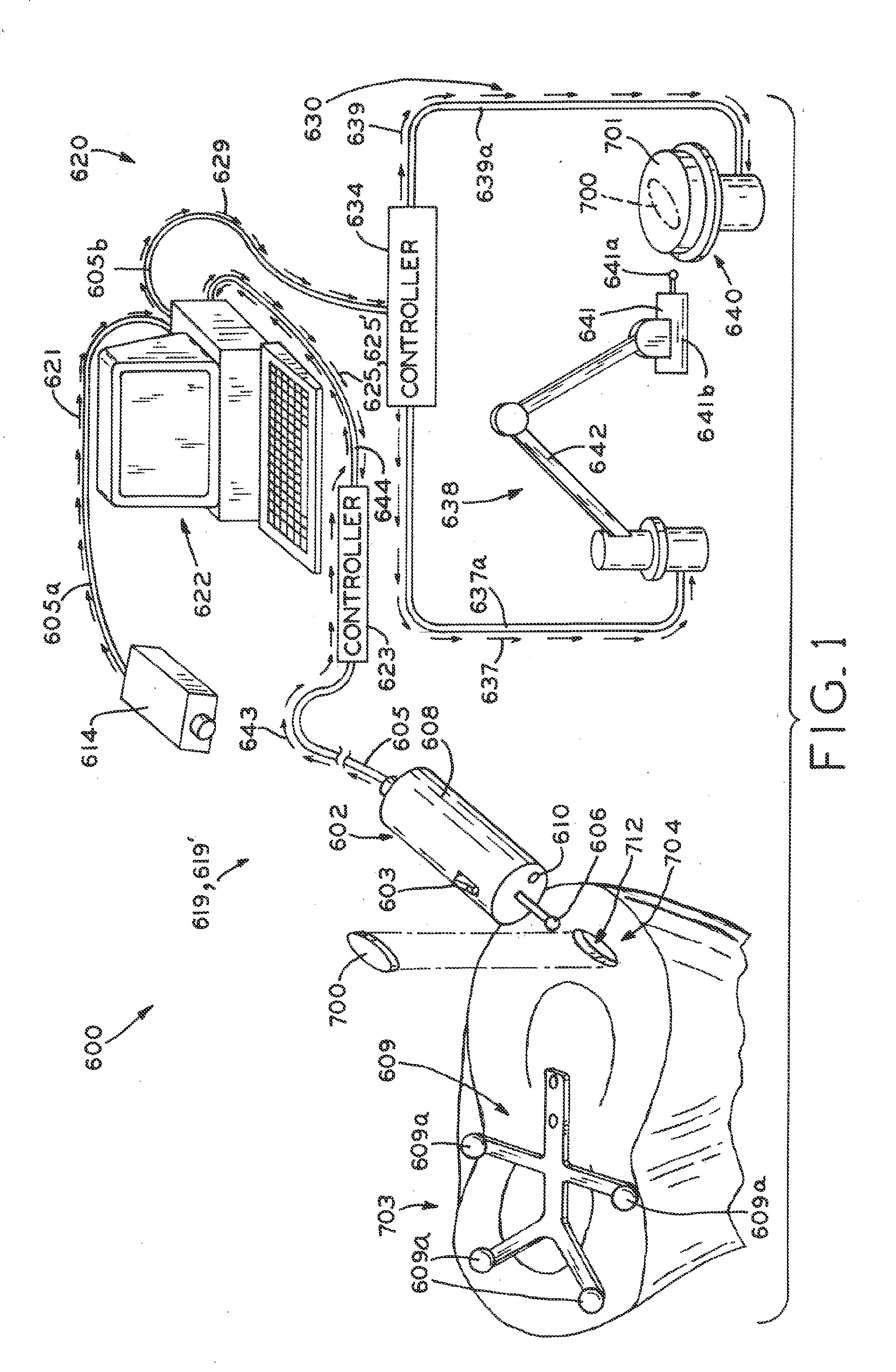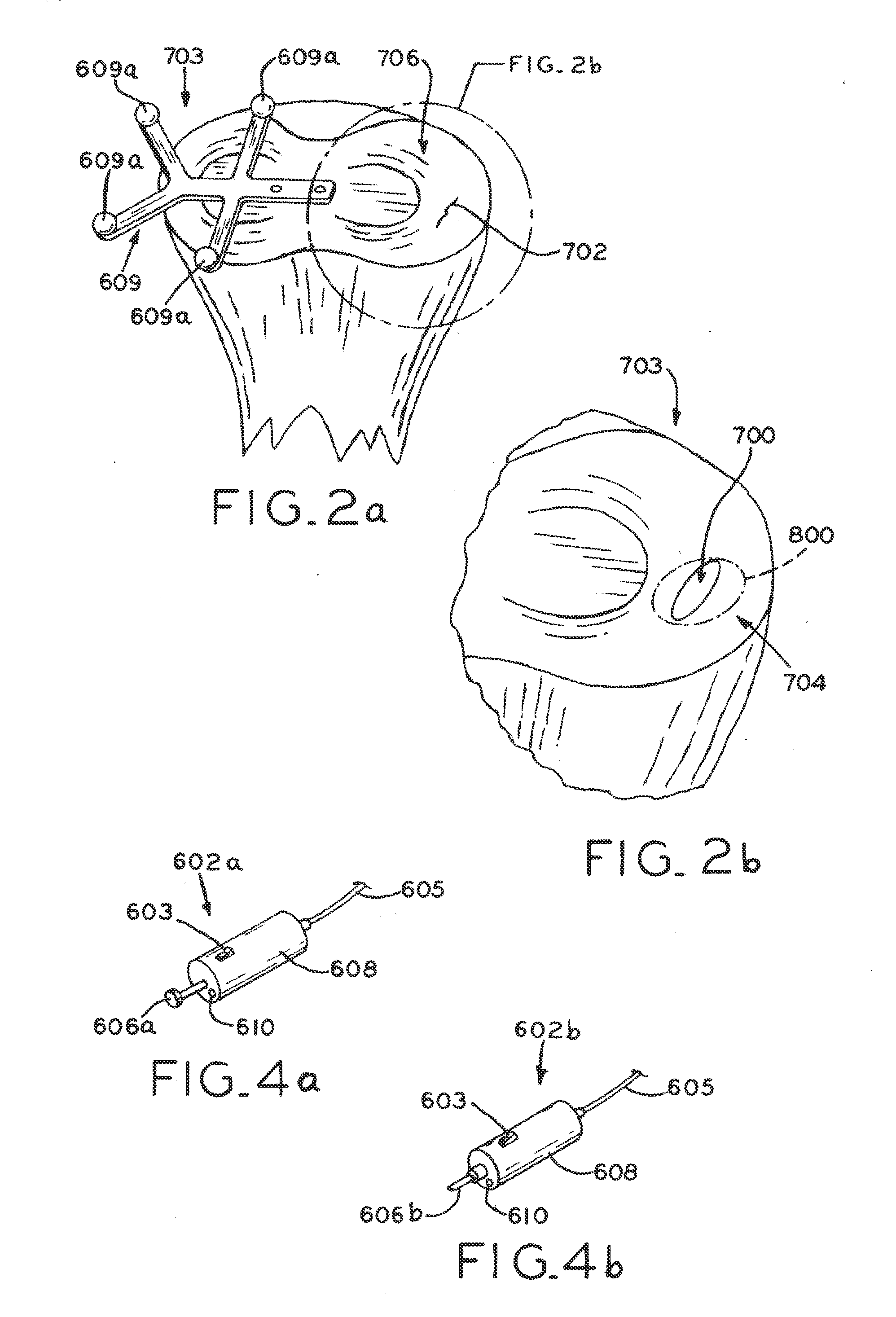Tracked cartilage repair system
a cartilage repair and cartilage technology, applied in the field of tissue repair and replacement, can solve the problems of pain and/or restricted mobility, damage to anatomical tissues, and bone and cartilage damage,
- Summary
- Abstract
- Description
- Claims
- Application Information
AI Technical Summary
Benefits of technology
Problems solved by technology
Method used
Image
Examples
Embodiment Construction
[0026]Referring to FIG. 1, orthopaedic system 600 includes tracked tissue resection tool 602, tracking system 619, signal conversion system 620, and custom implant forming system 630. As resection tool 602 is used to resect defective tissue 702 (FIG. 2a), tracking system 619 monitors the movement of tool 602. Data points indicative of the monitored cutter position are collected throughout the resection, rendering a set or “cloud” of data points bounding a virtual volume that is representative of void 712. Tracking system 619 sends this data set to signal conversion system 620, which in turn converts the data into implant forming commands 629. Implant forming commands 629 are then sent to implant forming system 630, which creates custom implant 700 sized and shaped to fill void 712 created by the resection of defective tissue 702.
[0027]In the illustrated embodiment, orthopaedic system 600 is used to repair defect 702 (FIG. 2a) located in tissue 704 at the proximal end of tibia 703. H...
PUM
| Property | Measurement | Unit |
|---|---|---|
| volume | aaaaa | aaaaa |
| degrees of freedom | aaaaa | aaaaa |
| anatomical structure | aaaaa | aaaaa |
Abstract
Description
Claims
Application Information
 Login to View More
Login to View More - R&D
- Intellectual Property
- Life Sciences
- Materials
- Tech Scout
- Unparalleled Data Quality
- Higher Quality Content
- 60% Fewer Hallucinations
Browse by: Latest US Patents, China's latest patents, Technical Efficacy Thesaurus, Application Domain, Technology Topic, Popular Technical Reports.
© 2025 PatSnap. All rights reserved.Legal|Privacy policy|Modern Slavery Act Transparency Statement|Sitemap|About US| Contact US: help@patsnap.com



